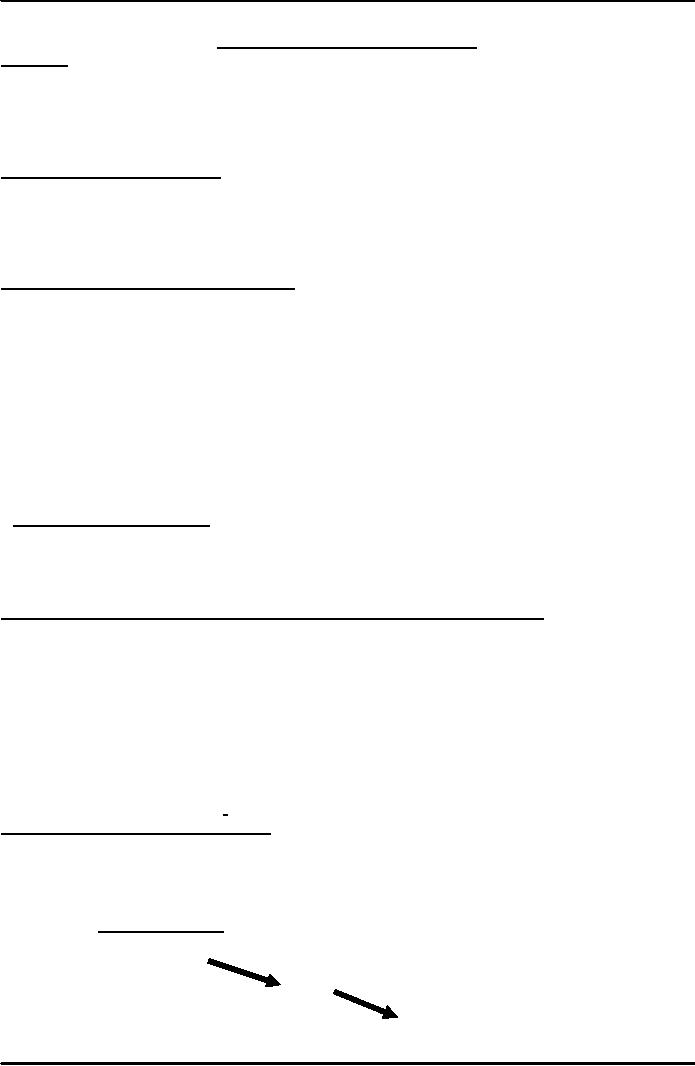 |
PUBLIC RELATIONS PROBLEMS:Defining PR problems, Cís of PR explained |
| << BUDGETING IN PR:Labour, Office Overheads, PR & Photographs |
| METHODS OF COMMUNICATION:Psychology of Public Relations >> |

Fundamentals
of Public Relations MCM 401
VU
Lesson
11
PUBLIC
RELATIONS PROBLEMS
Overview
This
lecture will cover the
problems which a PR practitioner
has to face in the course of
his performance.
We
will define the problems and
its causes and how to
resolve them. We will
identify the crisis and
will
explain
the strategy to overcome them besides
warning against common mistakes which could be
made to
solve
them.
4
Step Problem Solving
Process
1.
Defining
the problem (or
opportunity).
2.
Planning
& Programming.
3.
Taking
action & communicating.
4.
Evaluating
the program.
Defining
PR problems.(Problem
Statement)
--
Written
in present tense, a problem
statement describes a situation in
specific
&
measurable terms.
What
is the
source of concern?
Where
is this
problem?
When
is it a
problem?
Who
is
involved or affected?
How
are
they involved or affected?
Why
is this
concern to the organization & its
public?
To
develop action & communication strategies with a
detailed analysis of the problems of
target publics.
4
Questions Need
Answering.
1.
How much do people use
information in the problem
situation?
2.
What kinds of information do people
use?
3.
How do people use
information?
4.
What predicts information
use?
Mission
of Public Relations Is to help
the organization achieve its
mission by:
∑
Collecting
& analyzing information on the
changing knowledge, opinion &
behaviors
of key publics & stakeholder
groups.
∑
Serving
as the central source of information
about an organization and as
the
official channel of communication between
an organization & its
publics.
∑
Communicating
significant information, opinions, &
interpretations to keep
an
organization's public & other
stakeholders aware of
organizational
policies
& actions.
∑
Coordinating
activities that affect an organization's relationships
with its
publics
& other stakeholder
groups.
How
does PR work to solve
problems?
1.
A
searching look backwards!
2.
A
wide look around!
3.
A
deep look inside!
4.
A
long, long, look ahead!
Basically
it is "learn
feel do" theme
which guides PR program
for
solving
problems"
Information
Gain
Opinion
Change
Behavioral
Change
30

Fundamentals
of Public Relations MCM 401
VU
How
To Anticipate Crisis (Disasters)
?
Immediate
crisis.
Emerging
crisis.
Sustained
crisis.
Common
mistakes in handling crisis.
Hesitation.
Retaliation.
Pontification.
Confrontation.
Litigation.
How
To Prepare For Public
Relations Crisis?
Identify
things that can go wrong &
become highly visible,
assess
weaknesses
throughout the organization.
Assign
priorities based on which
weaknesses are most urgent &
most
likely.
Draft
questions, answers & resolutions
for each potential crisis
scenario.
Focus
on the two most important
tasks what to do & what to say
during
the first critical hours following a
crisis.
Develop
a strategy to contain & counteract,
not react &
respond.
Countering
Crisis With Strategy.
7
C's of PR
are effective means of strategy to
counter crisis
1.
C
REDIBILITY.
2.
C
ONTEXT.
3.
C
ONTENT.
4.
C
LARITY.
5.
C ONTINUITY &
CONSISTENCY.
6.
C
HANNELS.
7.
C
APABILITY OF THE AUDIENCE.
7
C's of PR explained.
Credibility.
1.
Communication
starts with Belief, built by the
institution on performance.
2.
Context.
A
communication program must confirm not
contradict the message.
Content.
3.
Message
should have meaning for
recipients.
4.
Clarity.
Message
must be put in simple
words.
Continuity
& Consistency.
5.
Communication
is an unending process, requires
repetition to achieve results
but with variation.
6.
Channels.
All
established channels of communication should be
used.
Capability
of the
audience.
7.
Take
into consideration the habits, reading
ability, and prior
knowledge.
31
Table of Contents:
- INTRODUCTION & BRIEF HISTORY:Definitions Of Public Relations
- HOW DOES PR WORK?:OVERVIEW, Formulation of policy
- PUBLIC RELATIONS DISTINGUISHED:Size of a PR Department.
- PUBLICS OF PR:Expanded Publics, Few Examples Of Publics
- PLANNING PUBLIC RELATIONS PROGRAMMES:Print Media, Electronic Media
- MEDIAS OF PR:Media for External Publics, Principles of Good Press Relations
- PRESS RELATIONS IN PR:What is News, Secrets Of Good News Release.
- CREATED PRIVATE MEDIA:Private Media, New Forms of House Journals
- SPECIAL USES OF PUBLIC RELATIONS:Crisis Management, Skills Of PR
- BUDGETING IN PR:Labour, Office Overheads, PR & Photographs
- PUBLIC RELATIONS PROBLEMS:Defining PR problems, Cís of PR explained
- METHODS OF COMMUNICATION:Psychology of Public Relations
- PR IN VARIOUS ORGANIZATIONS:Techniques of Trade Association PR
- PR IN LABOUR UNIONS & RELIGIOUS GROUPS:Community Public Relations
- PR IN EDUCATIONAL INSTITUTIONS & IN MEDIA CHANNALS
- USING ADVERTISING FOR P R COMMUNICATION:Role Of PR
- ROLE OF PUBLIC RELATIONS IN MARKETING:How To Educate The Market
- PUBLIC RELATIONS AND CORPORATE STRUCTURE:Corporate Identity Essentials
- E-PR & ITS TOOLS:Immediate Points To Consider, Using Email As PR Tool
- SPONSORSHIPóAN IMPORTANT PR TOOL:PR & Communication Audit
- HOUSE JOURNALS:Possible Publics Of House Journals, Exhibitions & PR
- CRISIS MANAGEMENT IN PR:Plan Of Action Adopted, Interview at your place
- ADVERTISING IN PR:Broad Objectives Of Advertising, Direct Advertising.
- INTERNATIONAL PUBLIC RELATIONS:Media Used, Within Store Contacts
- PUBLIC RELATIONS CONSULTANCY:Disadvantages, Mass Communication
- PUBLIC RELATIONíS ROLE IN MARKET EDUCATION:Kinds Of Markets
- MODERN DAY VALUES OF PR:Ethics Of Public Relations
- CHOICE OF MEDIA FOR PR COMPAIGN:Communication Channels & Media
- PR TECHNIQUES:Tactics & Techniques
- DESIGNING PR COMPAIGNS:Definitive Mission statement, Reputation.
- PUBLIC OPINION:Identifying Priority Publics, If Goal Is Attitude Change
- PUBLIC RELATIONS AND RESEARCH:Planning Phase Of Research
- PR AND RESEARCH:Unobtrusive Measures, Questionnaires For Survey
- PROBLEMS SOLVING STRATEGIES:Communicate results
- PERSUASION & COMMUNICATION THEORIES:Message Orientation
- COMMUNICATION CONCEPTS & THEORIES:Research and Persuasion
- PUBLIC RELATIONS & LAW:How To Stay Out Of Trouble
- PUBLIC RELATIONS & CASE STUDIES:Case Analysis, Images Of Public Relations
- PR AND PRINTING PROCESSES:Fundamentals Of Printing
- PUBLIC SPEAKING -- A PR TOOL:Key Benefits, How To Prepare
- PR -- COPING WITH UNEXPECTED:Some Possible PR Ideas
- DREAMS & REALITIES OF PR:Who Takes Charge Of Identity?
- CHANGING INTO OVERDRIVE:How International Is PR?
- GETTING ON WITH PR:Where does PR fit in the structure?
- FUNDAMENTALS OF A SUCCESSFUL NEWSLETTER:RESEARCH, WRITING